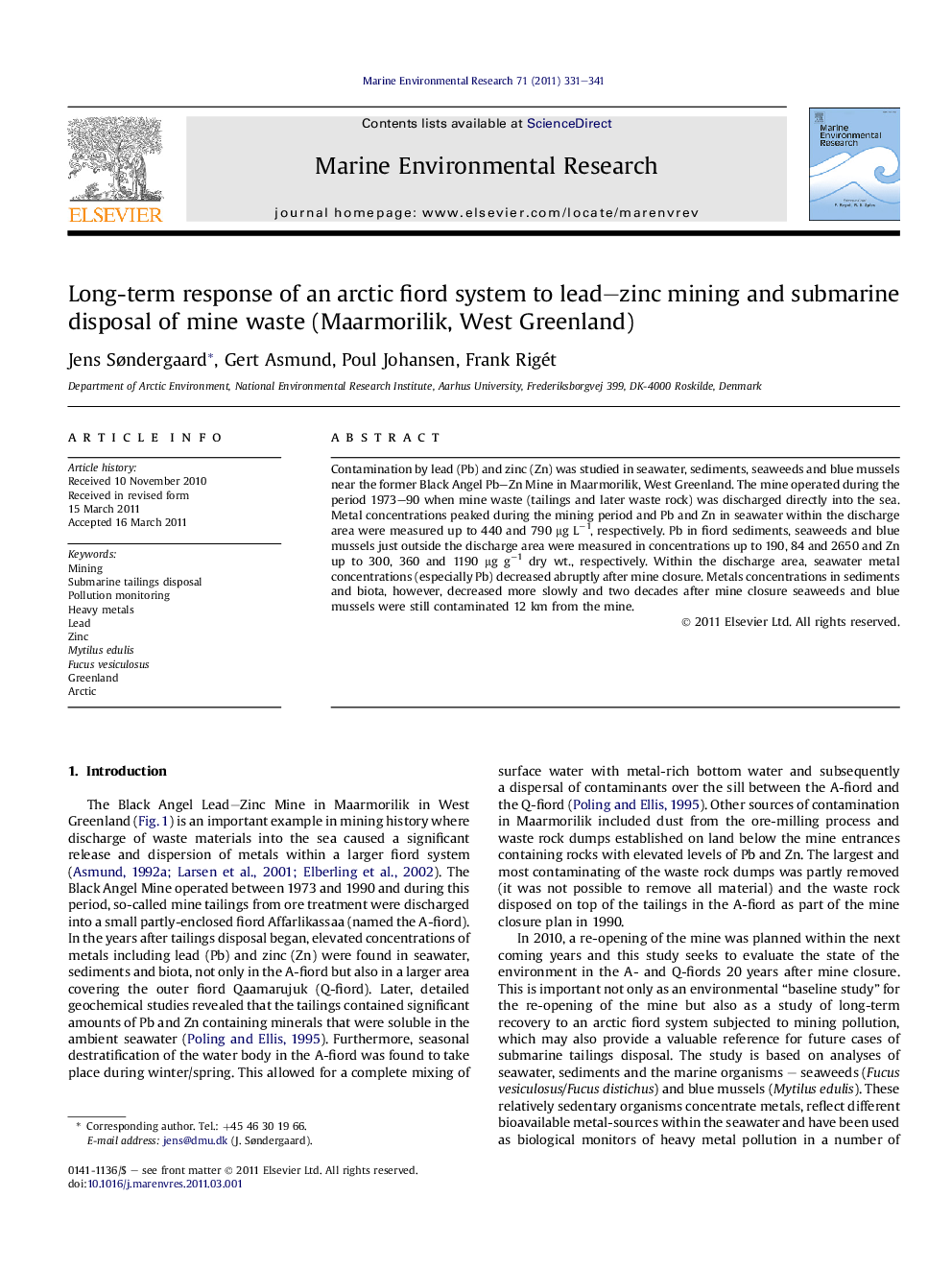| کد مقاله | کد نشریه | سال انتشار | مقاله انگلیسی | نسخه تمام متن |
|---|---|---|---|---|
| 4551164 | 1328278 | 2011 | 11 صفحه PDF | دانلود رایگان |

Contamination by lead (Pb) and zinc (Zn) was studied in seawater, sediments, seaweeds and blue mussels near the former Black Angel Pb–Zn Mine in Maarmorilik, West Greenland. The mine operated during the period 1973–90 when mine waste (tailings and later waste rock) was discharged directly into the sea. Metal concentrations peaked during the mining period and Pb and Zn in seawater within the discharge area were measured up to 440 and 790 μg L−1, respectively. Pb in fiord sediments, seaweeds and blue mussels just outside the discharge area were measured in concentrations up to 190, 84 and 2650 and Zn up to 300, 360 and 1190 μg g−1 dry wt., respectively. Within the discharge area, seawater metal concentrations (especially Pb) decreased abruptly after mine closure. Metals concentrations in sediments and biota, however, decreased more slowly and two decades after mine closure seaweeds and blue mussels were still contaminated 12 km from the mine.
► A study of an arctic fiord system's long-term response to mining pollution.
► Two decades after mine closure, the fiord was still contaminated with lead and zinc.
► Metals were still elevated in seaweeds and blue mussels 12 km from the mine.
► Zinc was still released from marine-disposed mine tailings while lead was probably not.
► Transplantation of blue mussels provided a way of monitoring annual contamination.
Journal: Marine Environmental Research - Volume 71, Issue 5, June 2011, Pages 331–341